
 |
|
| |||||||||||||
|
Abel Gance's Napoleon
Napoleon (1927)
Shown at the Paramount Theatre, Oakland March 24th, 2012 by John Sinnott 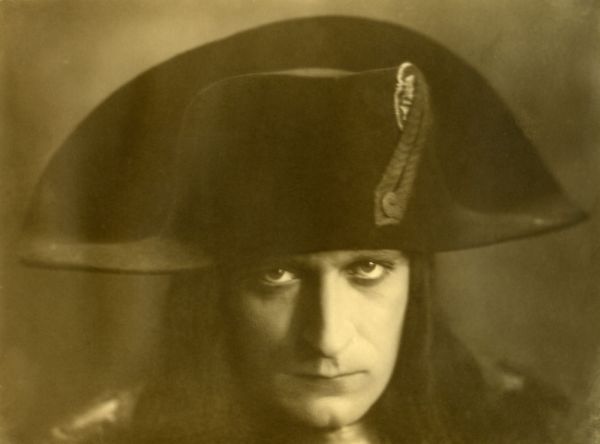 I live in The
Restoration:
This movie has been a passion of silent film historian Kevin Brownlow for a large part of his life. As he related in a presentation at last year's San Francisco Silent Film Festival, he stumbled upon a reel of the film as a young man and became enthralled with the style, dramatic storytelling, and innovative techniques in the fragment that he obtained. He soon discovered that the original version ran an astounding six hours and concluded with an extended triptych sequence: three projectors showing three connected images on adjacent screens. This final battle scene was only ever shown in eight cities in  Kevin Brownlow began searching for alternate versions of this epic, and it was a search that stretched across over fifty years. He even tracked down Abel Gance and interviewed him extensively for the 1968 book, The Parade's Gone By... one of the first comprehensive works on silent films and essential reading for anyone interested in the era. (A very good read too!) He devotes the penultimate chapter to Gance and especially Napoleon. In 1981 a four hour restoration was completed and Carmine Coppola (Francis Ford Coppola's father) composed a score for that version, and a second score was created by silent film musician Carl Davis. By 2004 more footage had been discovered and the film had grown to 5 ½ hours in length (some of that is due to correcting the projection speed). The problem that has been keeping the longer version from being seen is that the Coppolas obtained a copyright for the 1981 version with Carmine's score. Since the 2004 cut is based on the 1981 restoration, there is a rights dispute over which music can and should be played. It is that dispute that has kept the longer film from playing in more that a couple of times since 2004 and why it will probably never make its way to home video. The
Film:
The terms 'epic' and 'masterpiece' are used a lot nowadays and every big budget spectacle, whether it's any good or not, will have one or both words plastered on the advertisements. This is a film that can truly be called epic in scope. Originally planned as three films, only this first movie was ever made. It starts with a young Napoleon Bonaparte away at boarding school in 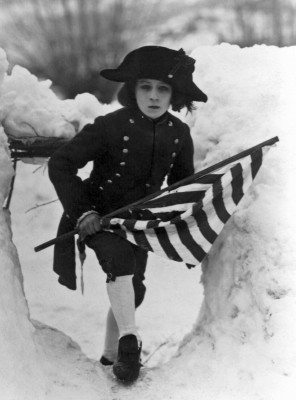 Time passes and Napoleon has joined the French army as an officer, and is living in near poverty. After the French Revolution he makes a rare visit back home to the In one of the many inspired scenes in the film, a storm, or actually two storms, hit. One storm hits Napoleon while at sea in the dingy, and he has to fight for his life to ride it out. At the same moment the other storm hits Eventually Napoleon attains the rank of Captain and is assigned to the force that is going to attack the British and European forces that have taken over 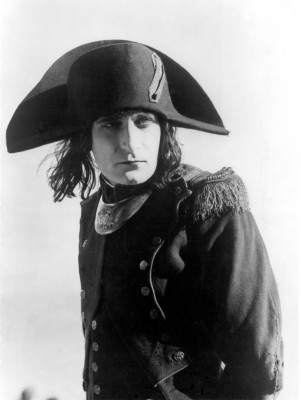 Politics is a tricky business, and Napoleon is not one to play well with others if they are fools. After refusing to take command of the After The Terror ended, Napoleon was freed but didn't have a post. He eventually was assigned to the map making bureau where, once again, his genius at making plans was noticed. When Royalists attacked the Assembly in an attempt to reinstate the monarchy, it was Napoleon, the hero of Finally, after that victory, he was awarded a commanding role. He was given control of the Italian campaign and sent south. But first he had something to do. He was in love with a woman he had met at a party, an attractive widow who had lost her husband to the guillotine, Josephine de Beauharnais. Before he left he married her, then headed off to take command. The movie ends with an abbreviated telling of his Italian campaign. Arriving to find the men without food or proper clothing he has little to work with. What's equally bad, the current general officers are openly hostile to him. Napoleon faces them down though the seer dominance of his personality and then address his men. He gives them a rousing speech that excites them and has them march off into history. The
Screening:
Wow, what a movie. Playing with three intermissions over a total of slightly more than eight hours, this was quite an event. There was easily enough here for a trio of films, and to a large extent that's what it felt like. Albert Dieudonne is spectacular in the title role. He has a quiet imperial arrogance about him that just fits the role perfectly. There are several scenes where Napoleon is confronted by a group of people and he has to stare them down. These wouldn't have worked with a lesser actor, but Dieudonne does it perfectly. It's as if he knows, as a God given fact, that he's better than everyone else. He's extremely confident but not cocky. He doesn't have anything to prove. He knows that he's great. The actor really gives a bravura performance. Kevin Brownlow has described Abel Gance as "the greatest French film maker of all" and it's easy to see why (even if you haven't see J'Accuse or La Roue.) This is a magnificent movie, and it isn't a case of quantity over quality. It is quantity and quality. Yes, it is incredibly long, but the film is filled with innovative and wonderful shots and sequences. For example, Gance puts a motorized camera on pendulum and swings it over a crowd in the Assembly to give a chaotic feel and then cuts that with the storm that Napoleon is fighting at sea. It's wonderful and effective. In other parts he cuts the frame into sections showing different actions in each one, and of course there is the amazingly effective triptych ending that has to be seen to be believed. He also overlays images, one on top of another, throughout the film. Other directors had done this before, but never on the scale that Gance used the technique. In the snowball fight at the beginning he has the young Napoleon in the middle shouting orders while scenes of the 'battle' rage all around him. There are literally dozens of images on top of the boy's face over the course of the scene. It's very impressive.
This film isn't just a case of just tricks however; the movie has many powerful images that will stay with you long after the film has ended. Gance had a wonderful visual sense and that makes it enjoyable to sit through such a long film. In one sequence, the young boy Napoleon's only friend, a pet eagle has been set free by some bullies. He fights them and gets punished for it: he has to sleep outside in the winter. With the boy lying on the cannon, fighting back the tears, his eagle flies down and lands near him. It's a beautiful scene. Then there's the battle of Of course the movie's not perfect. If you're not up on your French history, some of the moments will be lost to you. There are a few scenes where Napoleon asks a brave or particularly skillful soldier his name and he'll give it and then run off. He was obviously someone that the average Frenchman of 1927 would know, but I didn't. The same goes for some aspects of the plot. When Danton condemns the Girondists, what was going on went over my head. It was easy to figure things out given later events, but brushing up on what happened during the revolution before seeing this wouldn't hurt. As with the historical films of today, this isn't as accurate as it could be, though Gance did put "(Historical)" after quotes that he took (he wrote the screen play too) from historical sources. That was a very nice touch, but it was obvious that some characters were fictional, and some events were made from whole cloth. That's not a problem really. A film maker has to tell a story and sometimes a little fiction helps to move the narrative along. What's more unfortunate is that Gance sometimes gives Napoleon motivations that most historians would say he never had. The most glaring example of this is near the end of the movie when he's traveling to The
Presentation:
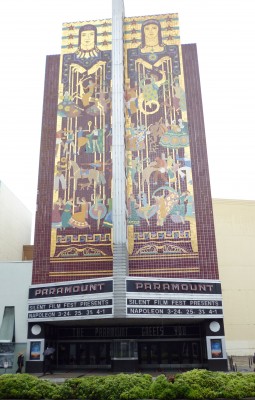 The Silent Film Festival did a great job of picking a venue and getting the right accompaniment for this presentation. The screening was held in at the Paramount Theater in 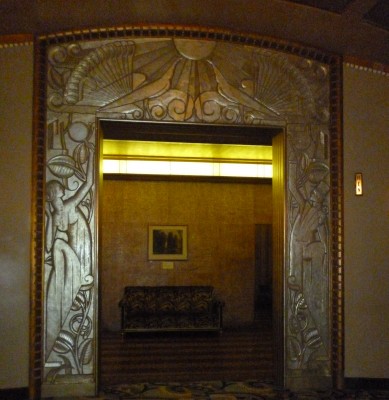 The movie was accompanied by the Oakland East Bay Symphony, a 48-piece orchestra, conducted by Carl Davis using his score, and they did an amazing job. I can't imagine playing an instrument for 5 1/2 hours, even with 3 breaks, but they did it and still sounded as tight and in synch at the end as they did at the beginning. The live musicians really added a special feeling to the event. Sure, they could have recorded the music, but having professional musicians playing in the orchestra pit does make a difference and I'm glad that they went to the extra hassles to arrange it. 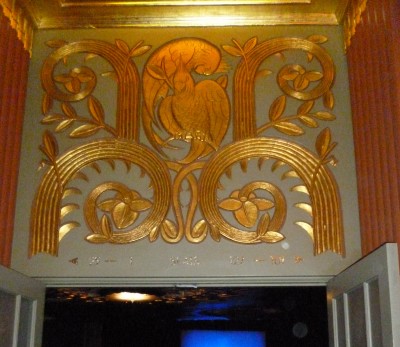 It has been almost 8 years since the movie has been shown. On top of that, there is only one print of this version of the film in the world, and it's in
Archives
The 5 Most Influential Summer Blockbusters
Los Angeles Comic-Con Cosplay Spotlight Notes from Book Expo DVD Talk Interview: Batman: Return of the Caped Crusaders Compete Archives
Review Staff
| Newsletter Subscribe
| Join DVD Talk Forum
|
| |||||||||||
| |||||||||||||